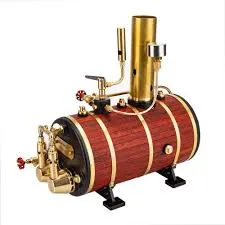
Oct . 11, 2024 13:27 Back to list
boiler water temperature setting
Understanding Boiler Water Temperature Settings Importance and Best Practices
Boilers play a crucial role in many heating systems, delivering hot water for heating purposes or for use in industrial processes. One of the key factors that directly impacts a boiler’s efficiency and performance is the water temperature setting. Adjusting the boiler water temperature is vital not only for efficient energy use but also for ensuring comfort and safety.
Importance of Proper Temperature Setting
Setting the correct boiler water temperature is essential for several reasons. Firstly, an optimal temperature enhances energy efficiency. If the water is heated to a temperature that is too high, it results in unnecessary energy consumption and increased utility bills. Conversely, setting the temperature too low can lead to insufficient heating, causing discomfort and possibly resulting in frozen pipes during colder months.
Moreover, maintaining an appropriate temperature helps in extending the lifespan of the boiler. High water temperatures can lead to thermal stress on the boiler's components, potentially causing leaks and failures. Therefore, establishing the right temperature range is critical for maintenance and longevity.
Recommended Temperature Settings
For residential heating systems, the typical boiler water temperature setting ranges from 140°F to 180°F (60°C to 82°C). The specific setting can be influenced by various factors, including the type of heating system in use (e.g., radiators vs. underfloor heating), the insulation of the building, and the local climate.
boiler water temperature setting

In colder climates, higher temperature settings may be necessary to maintain comfort. However, in warmer climates or during transitional seasons, lower settings can optimize energy use while still providing adequate heating. It is often recommended to start at a higher temperature and then adjust downwards as needed for greater comfort and efficiency.
Benefits of Lower Temperature Settings
There is a growing trend towards lower boiler water temperature settings, particularly with the increasing popularity of condensing boilers. These systems can achieve higher efficiency rates when the water temperature is kept below 140°F (60°C), allowing for the recovery of latent heat from the flue gases. This approach not only saves energy but also reduces carbon emissions, making it an environmentally friendly option.
Additionally, lower settings can help to prevent legionella bacteria growth in hot water systems. This bacteria thrives in temperatures below 140°F, posing a health risk in settings like hospitals and hotels. By maintaining higher temperatures for certain periods, the risk can be mitigated.
Conclusion
In summary, the boiler water temperature setting is a critical aspect of an efficient heating system. Understanding the importance of proper temperature management can lead to significant savings on energy bills, improved comfort, and prolonged equipment life. Homeowners and facility managers should regularly review and adjust the boiler settings based on actual heating demands, seasonal changes, and system capacity. By doing so, they can achieve optimal performance while also contributing to a more sustainable future. Proper temperature management is not just a technical adjustment; it is a vital practice that enhances both comfort and efficiency in heating systems.
-
High-Efficiency Gas Thermal Oil Boilers | HPT Models
NewsJul.31,2025
-
Oil Fired Hot Water Boilers Sale - High Efficiency & Affordable
NewsJul.31,2025
-
High-Efficiency Commercial Oil Fired Steam Boiler for Industry
NewsJul.30,2025
-
High-Efficiency Biomass Fired Thermal Oil Boiler Solutions
NewsJul.30,2025
-
High Efficiency Gas Fired Thermal Oil Boiler for Industrial Heating
NewsJul.29,2025
-
High-Efficiency Gas Fired Hot Water Boiler for Sale – Reliable & Affordable
NewsJul.29,2025
Related PRODUCTS






















